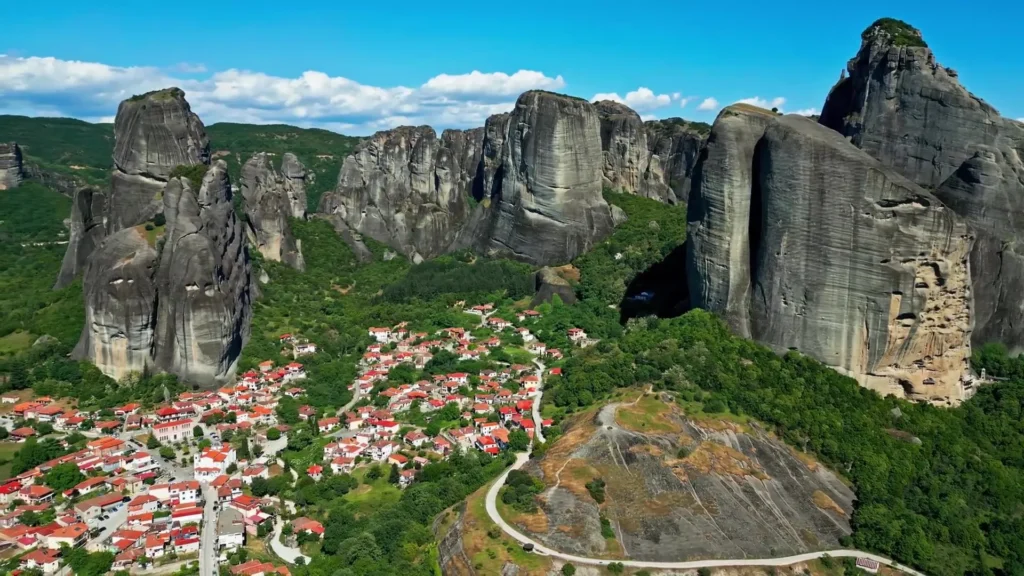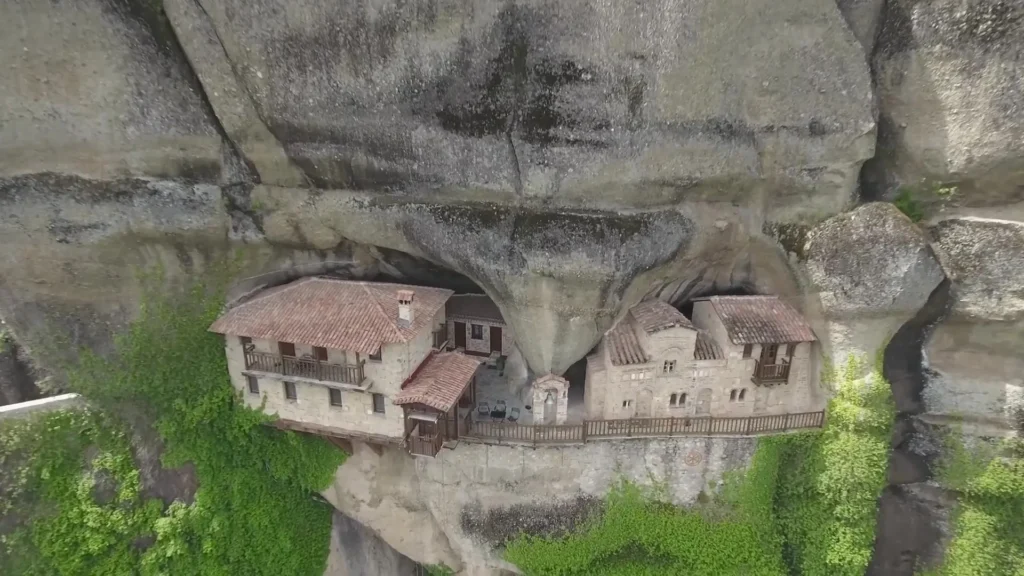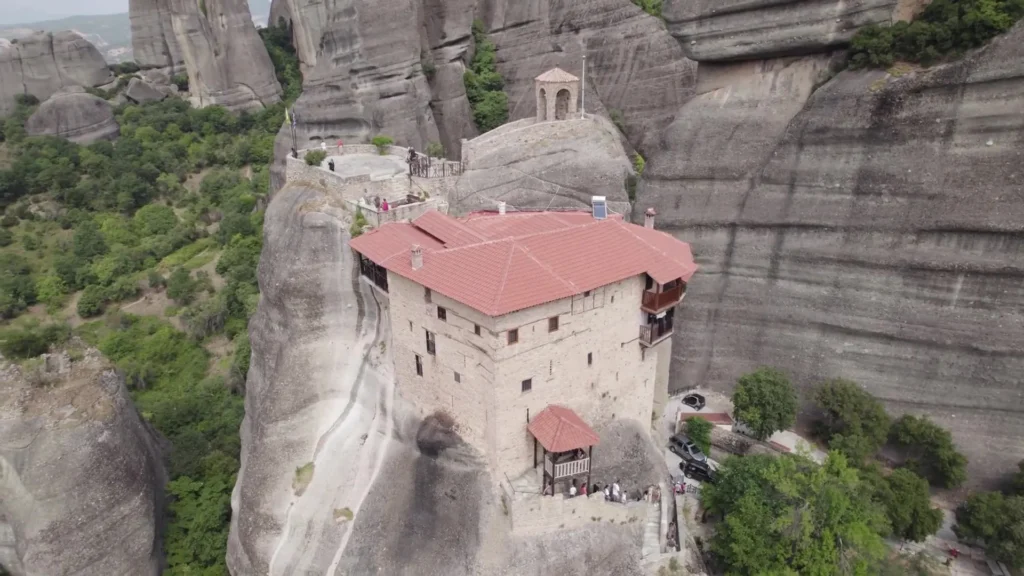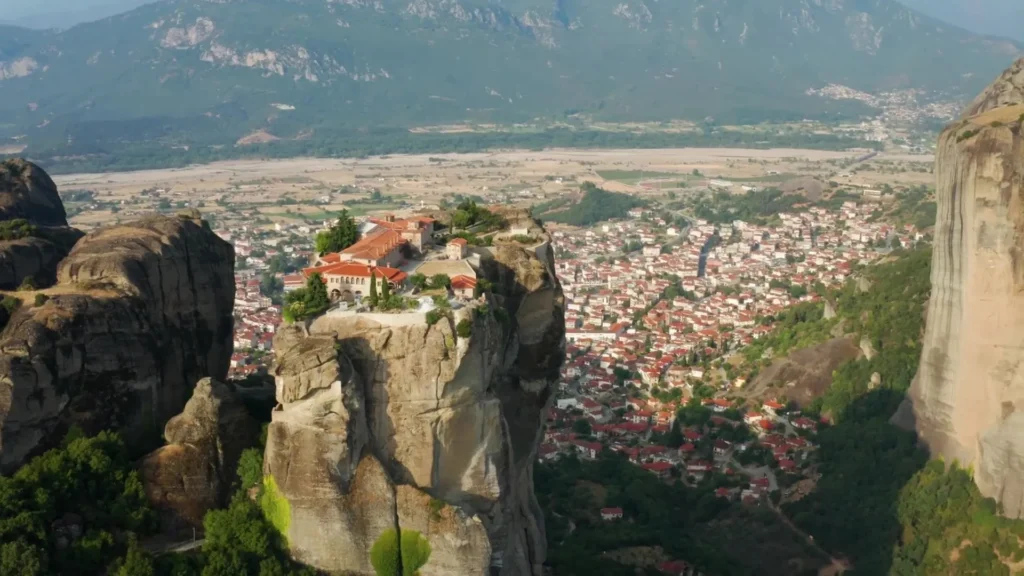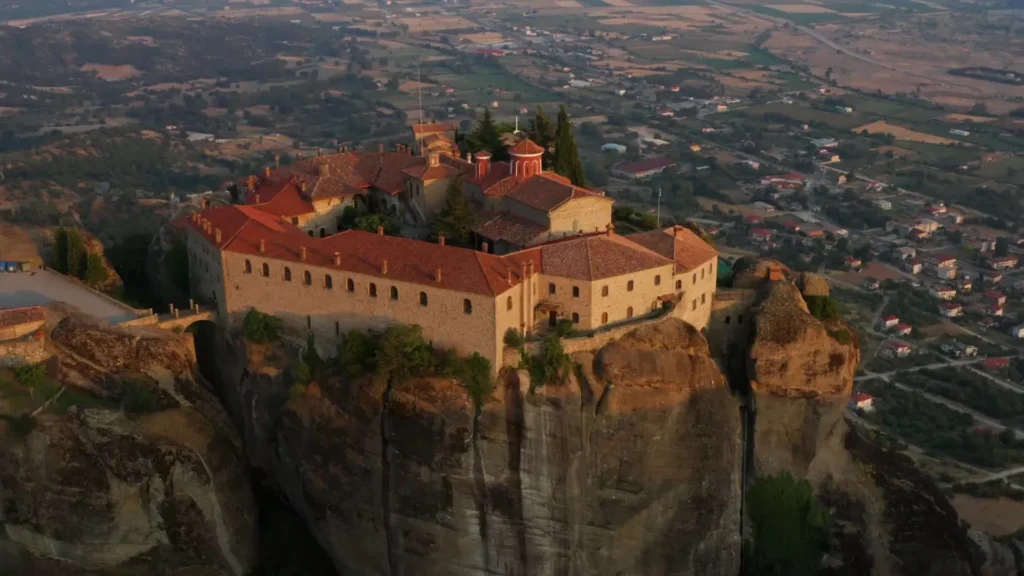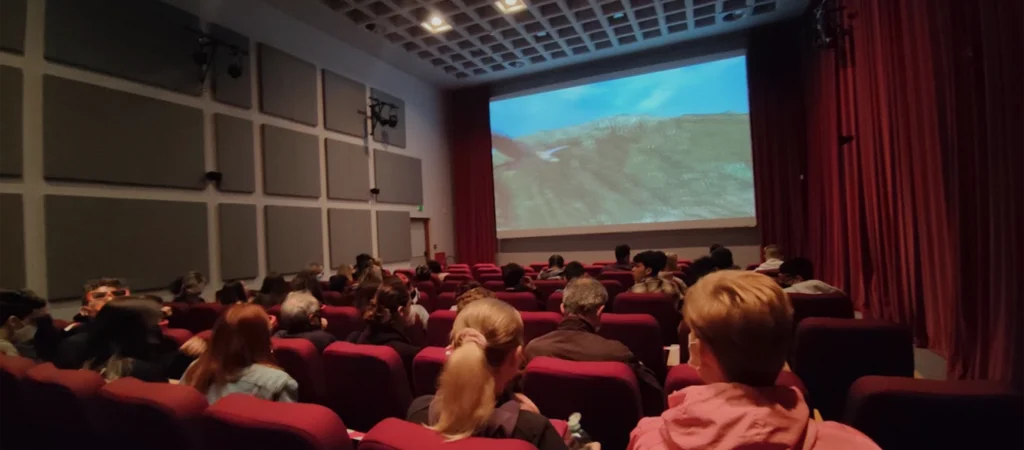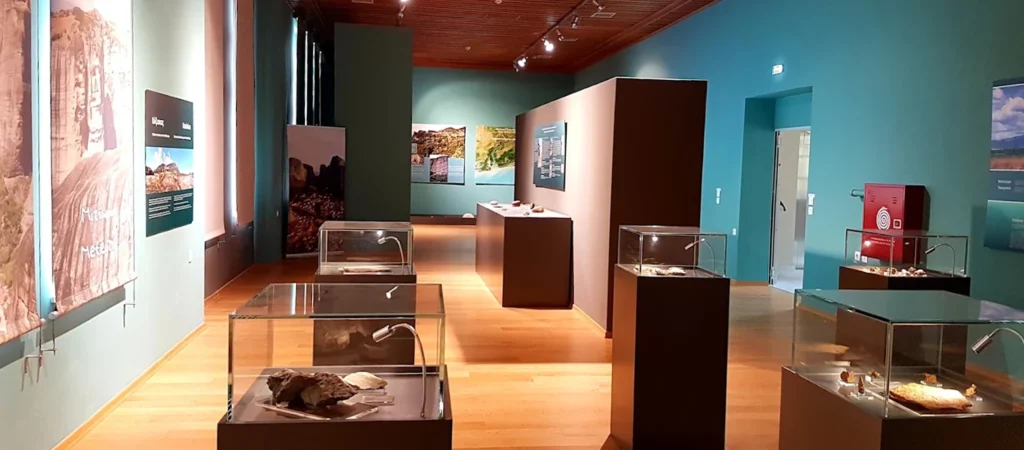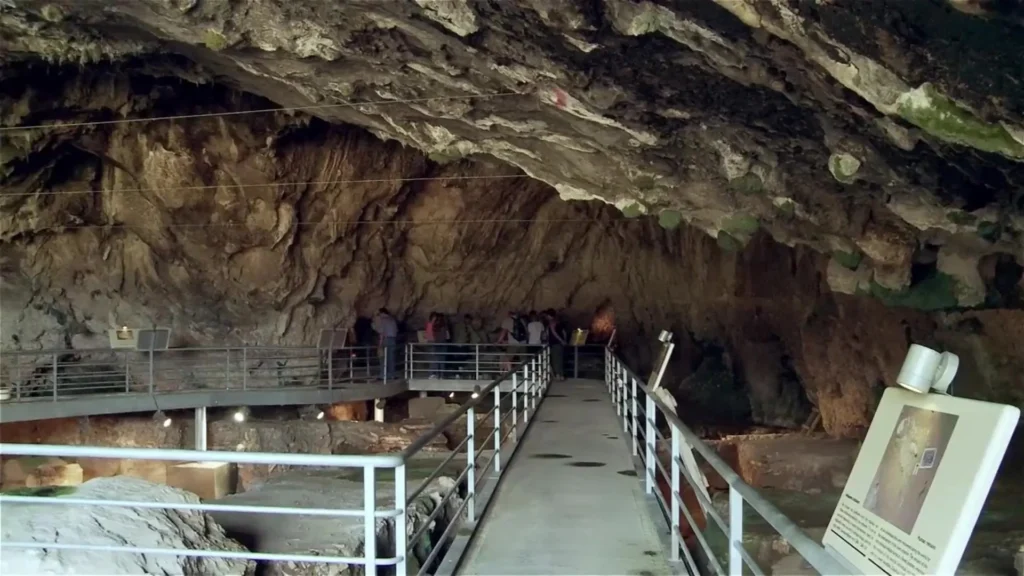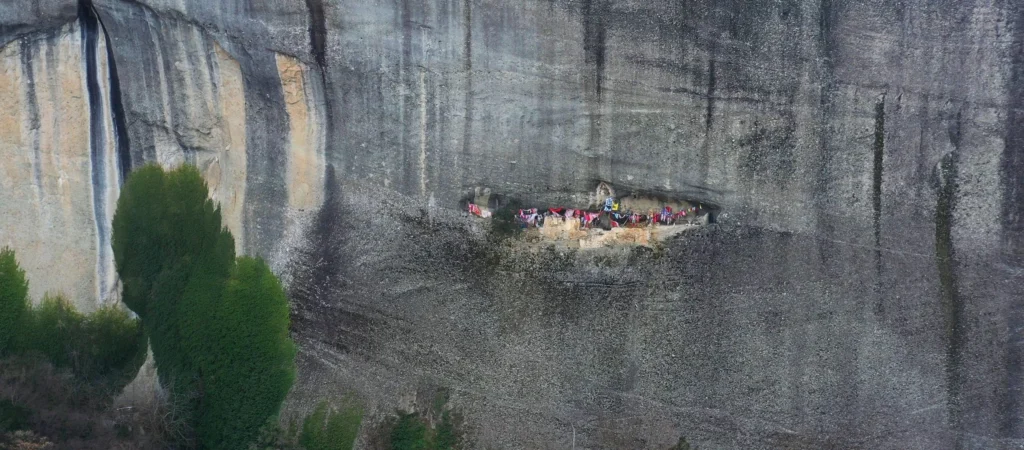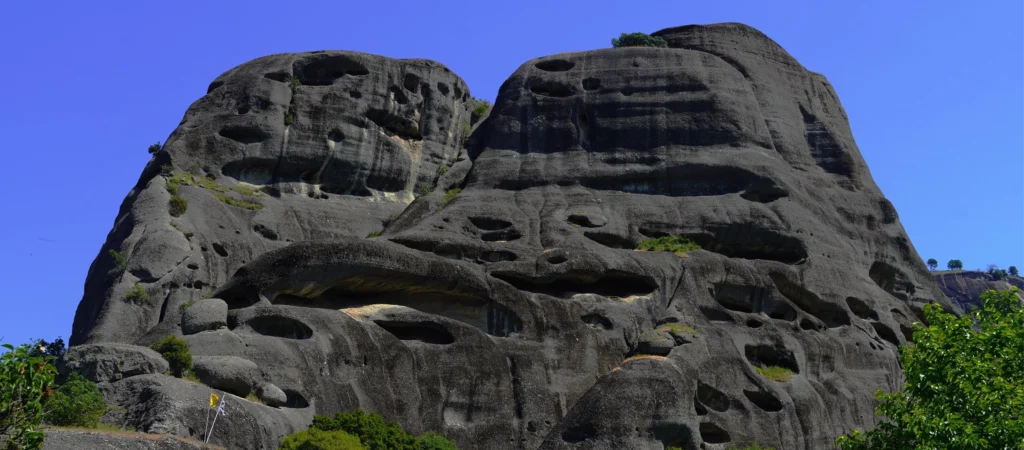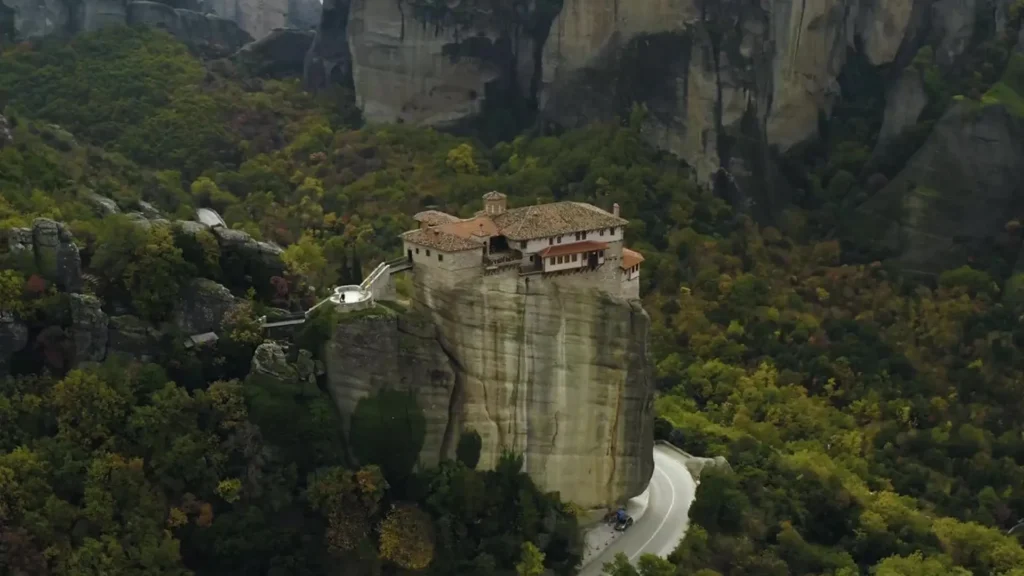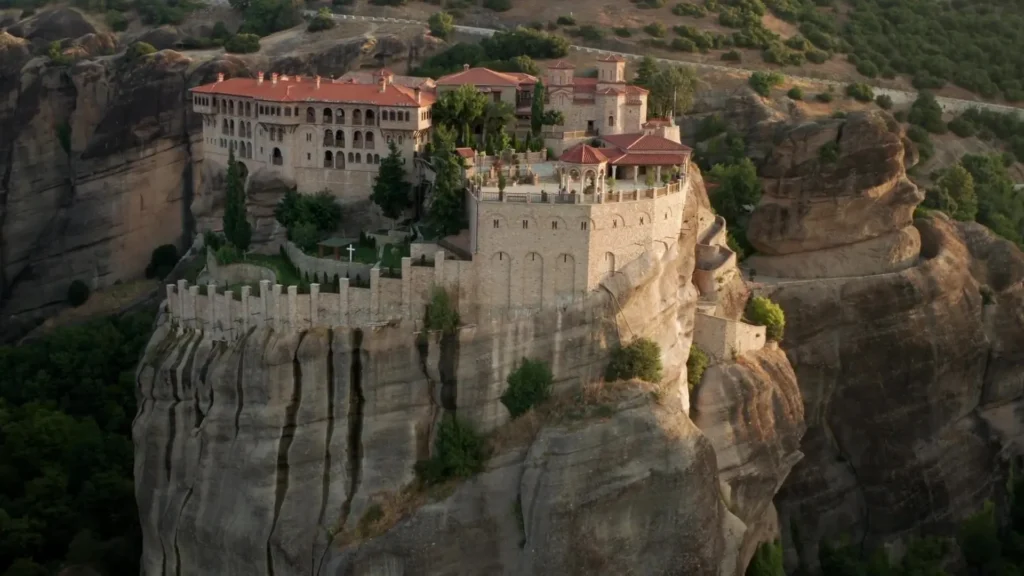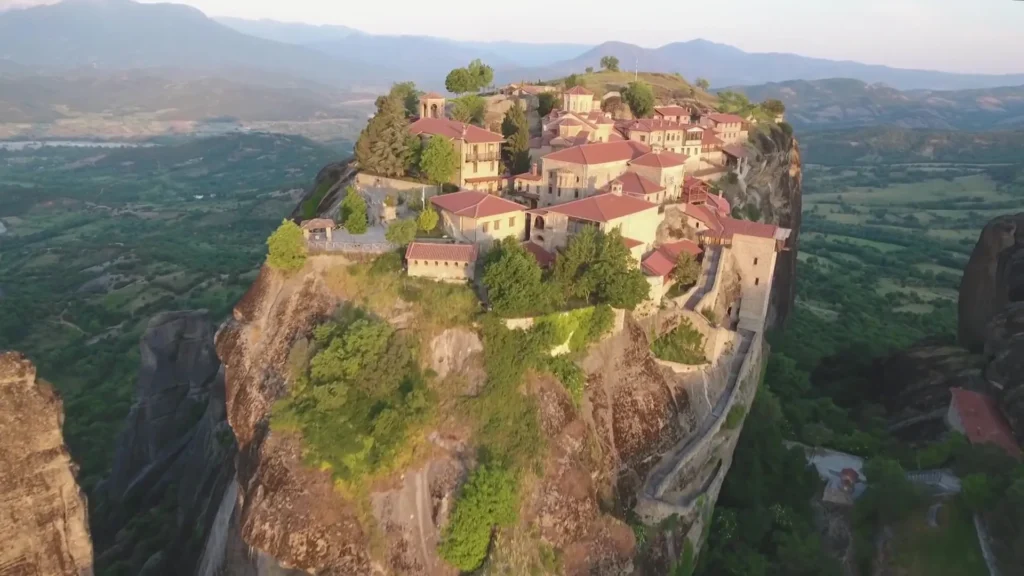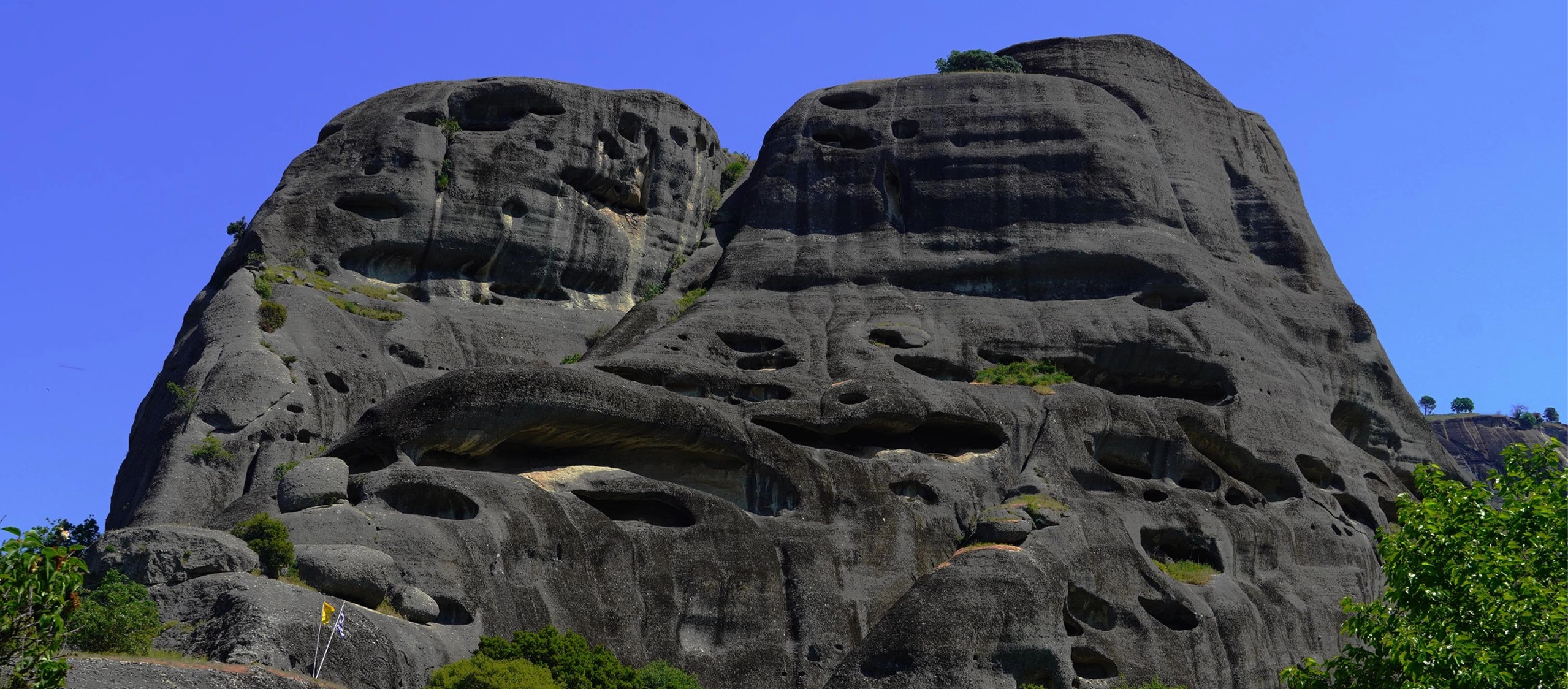
Good to Know
- Admission: Not available
- Access: Accessible only via hiking trail
- Accessibility: Not available
- Dress code: Suitable clothing for hiking
- Restrooms: Not available
- Museum: Not available
- Gift Shop: Not available
Follow the Footsteps of
Meteora’s First Hermits
Before the famous monasteries of Meteora were established, the area served as a sanctuary for ascetics and hermits who, as early as the 11th century, sought isolation, prayer, and spiritual stillness. Many of them settled in natural caves, carving out small spaces of prayer, known as “proseuchadia”.
Their presence, along with their deep devotion and self-denial, marked Meteora as a place of spiritual significance, firmly rooted in the Orthodox tradition.
The first known organized community was the Skete of Doupiani (12th century), centered around the Kyriakon of the Virgin Mary, located above today’s village of Kastraki. There, hermits would gather for worship on Sundays and during major religious feasts.
By the 16th century, the Skete of Meteora had developed, supervising nineteen smaller monasteries and hermitages, while a total of forty-one monastic sites were established throughout the area.
During the 14th and 15th centuries, monks began climbing to even more inaccessible peaks, using stakes, ropes, and makeshift wooden structures — not for spectacle, but in pursuit of deeper solitude and communion with God.
Today, six active monasteries continue to host organized monastic communities:
- St. Stephen’s Monastery
- Holy Trinity Monastery
- Rousanou (St. Barbara) Monastery
- St. Nicholas Anapafsas Monastery
- Varlaam Monastery
- Great Meteoron Monastery (Transfiguration)
In addition, three historic hermitages have been restored:
- Ypapanti Monastery (a dependency of the Great Meteoron)
- St. Nicholas Bantova Monastery
- St. Anthony Bantova Monastery (dependencies of Holy Trinity Monastery)
Visiting these sacred places offers more than sightseeing — it’s a journey into the heart of Meteora’s spiritual heritage, where silence and nature meet the legacy of Orthodox devotion.

